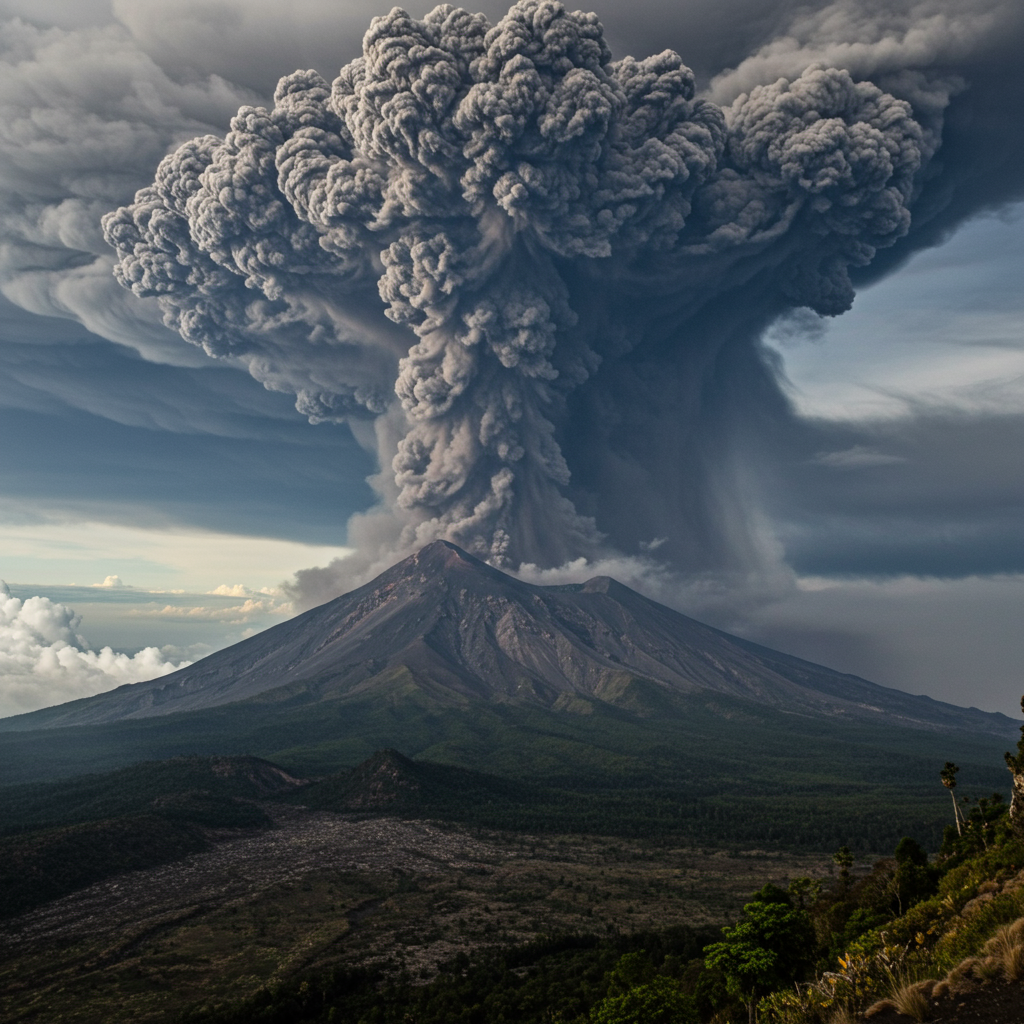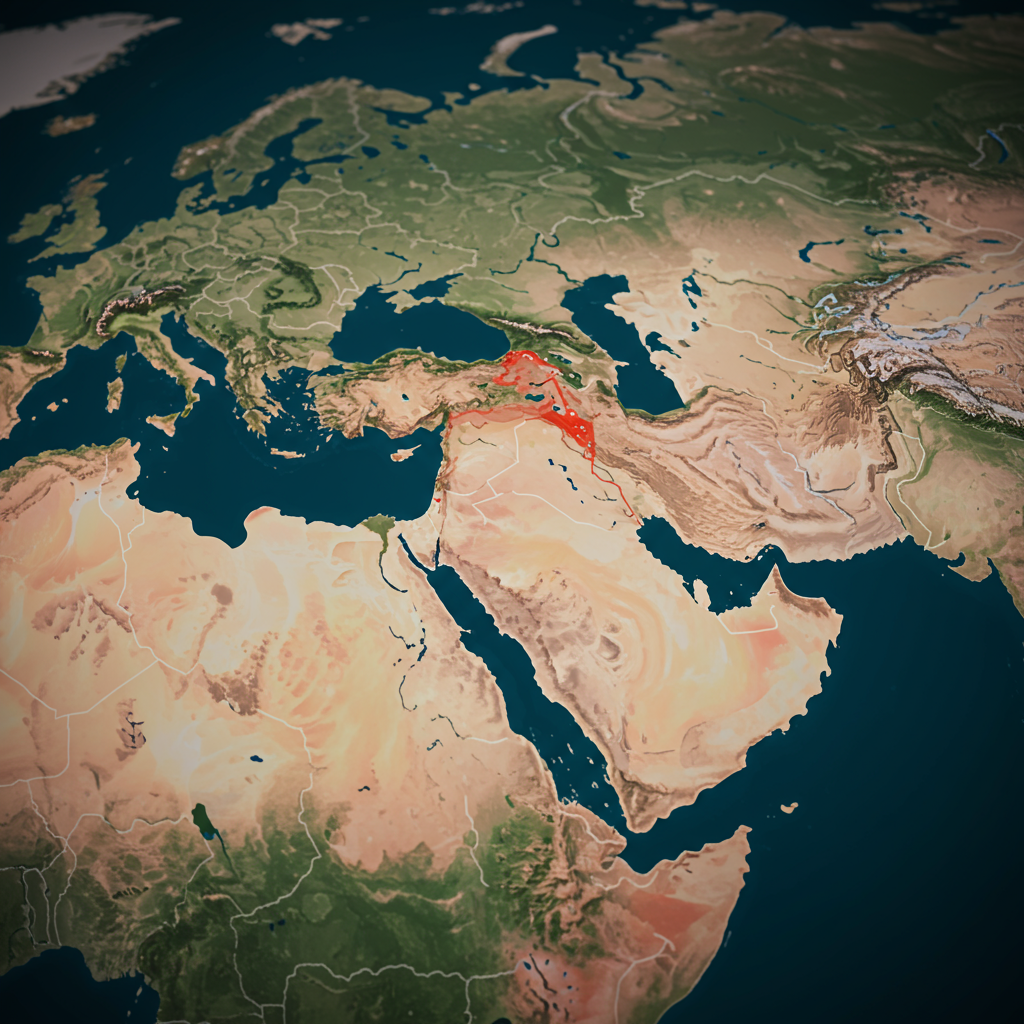Indonesia has issued its highest level of volcanic alert following a significant eruption of Mount Lewotobi Laki-Laki on Tuesday, June 17, 2025. The volcano, located on the eastern side of Flores Island in East Nusa Tenggara province, spewed a massive ash cloud high into the sky, prompting immediate safety measures.
The powerful eruption occurred at 5:35 pm local time (10:35 am BST), sending a thick, grey ash column described as “colossal” and “massive” soaring an estimated 11 kilometers (6.8 miles) or 10,000 meters (32,800 feet) above the summit. The ash plume formed a distinctive mushroom shape and was reportedly visible from distances ranging from 90 to 150 kilometers away.
Highest Alert Issued and Danger Zone Established
In response to the eruption’s magnitude and ongoing activity, Indonesian authorities raised the volcano’s alert status to Level 4, the highest tier in the country’s four-tiered system.
Authorities swiftly established and reportedly expanded an exclusion zone around the volcano’s crater, urging residents and tourists to refrain from any activity within a radius ranging from 7 to 8 kilometers (approximately 4.3 to 5 miles).
Evacuations and Safety Warnings
As a direct consequence of the eruption and heightened risk, mandatory evacuations were ordered, with reports indicating that at least one village was evacuated and hundreds of residents moved to safer locations. Ash rain was reported in several villages situated outside the immediate danger zone, prompting advisories for residents to wear face masks to protect against inhaling fine volcanic ash particles.
Officials, including geology agency head Muhammad Wafid, issued urgent warnings about a critical secondary threat: the potential for dangerous lahar floods. These destructive flows of volcanic material, mud, and debris can be triggered by heavy rainfall mixing with the volcanic deposits on the mountain slopes. Communities situated near rivers and watersheds downstream, including Dulipali, Nobo, Hokeng Jaya, and Nurabelen, were specifically advised to remain highly alert to this risk.
Authorities reiterated calls for residents in surrounding areas to evacuate to secure locations, noting that ongoing tremors indicated continued volcanic instability. While there were no immediate reports of damage or casualties directly attributed to Tuesday’s major eruption, the potential dangers remain significant.
Context: A History of Volatile Activity
The decision to elevate the alert to Level 4 followed a period of sustained, high-level activity at Mount Lewotobi Laki-Laki, including multiple eruptions over the preceding weekend, with ash plumes reaching heights of around 5.5 kilometers on Sunday.
Mount Lewotobi Laki-Laki has demonstrated increasingly volatile behavior recently. A particularly severe eruption in November tragically resulted in nine fatalities, dozens of injuries, and forced thousands of people to flee their homes. That event also caused significant disruption to air travel, including numerous international flight cancellations to Bali. Previous activity in March and May also prompted heightened alerts and affected flights.
Geographical Setting
Mount Lewotobi Laki-Laki stands at a height of 1,584 meters (5,197 feet) and is part of a twin volcanic system on Flores Island. Its name means “man” in Indonesian, and it is paired with the calmer, though taller, 1,703-meter (5,587 feet) peak named Mount Lewotobi Perempuan, meaning “woman.”
The volcano’s frequent activity is characteristic of Indonesia, a vast archipelago home to over 120 active volcanoes. Indonesia’s location along the Pacific “Ring of Fire,” a horseshoe-shaped series of seismic fault lines encircling the Pacific Basin, makes it one of the world’s most geologically active regions.
Aviation alerts have been issued following the eruption. While widespread major flight disruptions were not immediately reported for this specific event, authorities continue to monitor the situation closely, particularly given the history of previous eruptions impacting air travel. Emergency crews remain stationed near the volcano to observe its behavior and assist response efforts.



